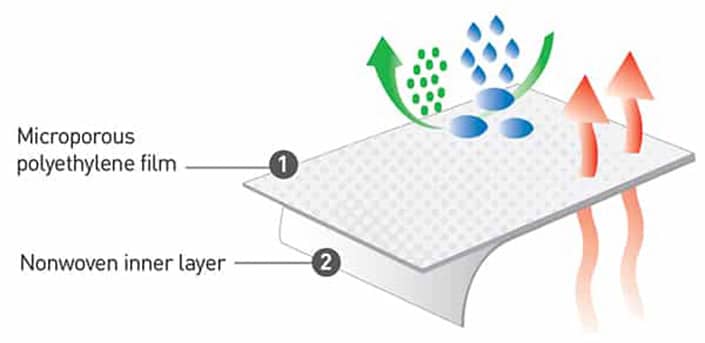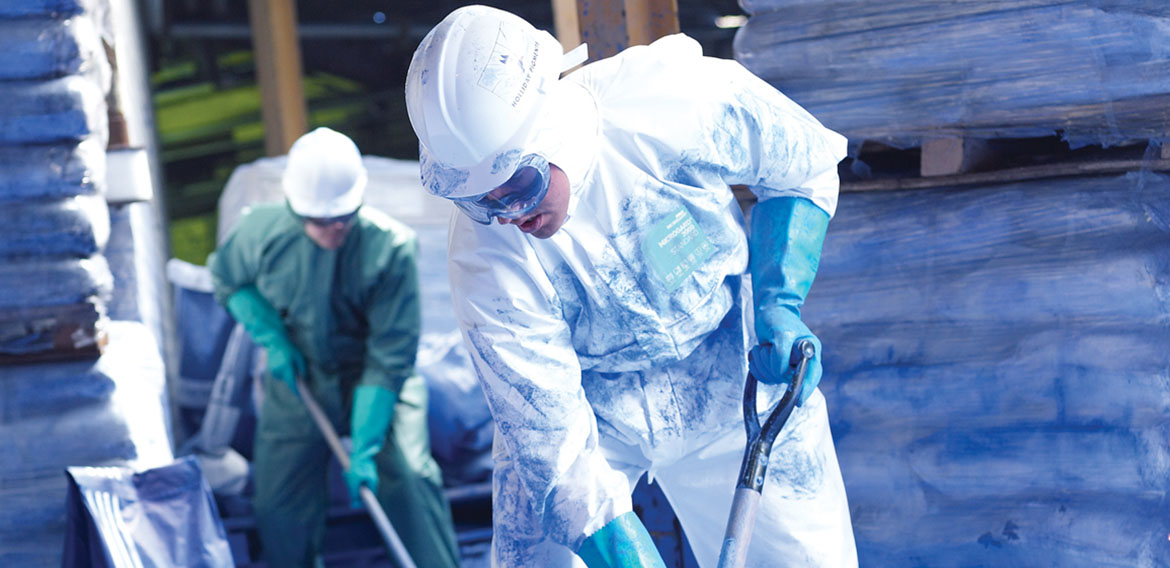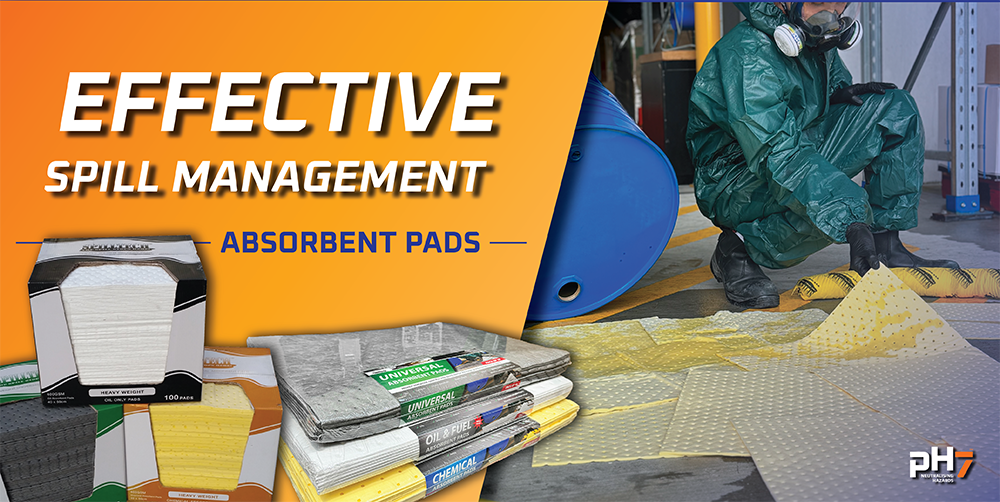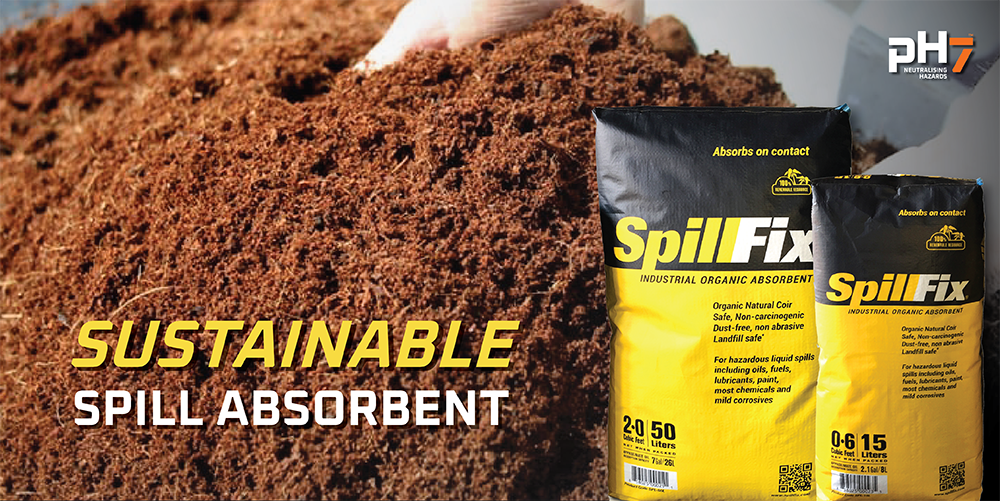Are Breathable/Washable Chemical Suits Effective as Barriers to Chemical Permeation?
Effective Chemical Protective Suits must not only provide a barrier to penetration by chemicals, but more importantly they should provide a long-term barrier to permeation by chemicals.
The hot and unpleasant nature of wearing chemical protective apparel has led several manufacturers to develop “breathable” materials which are designed to allow water vapour to escape whilst blocking liquid droplets and particulates.
In most cases, “breathable” chemical suits are designed for single use and to protect against limited liquid splashes (Type 6) and/or fine particulates (Type 5).

While breathable materials may repel some chemicals and stop them penetrating the suit through the small holes or pores that allow the material to ‘breathe’, they are often insufficient when it comes to protection against the permeation of hazardous substances. One can infer that if something is breathable, by its very nature cannot be impermeable.
Permeation is a process that can basically be described as when a substance passes through a material on a molecular level (for example: permeation is what happens when the helium from your balloon escapes through the walls of the balloon over time, and the balloon eventually goes flat).
Permeation is of concern when working with toxic substances that have long term “chronic” effects such as Class 6.6A/B Mutagens, 6.7A/B Carcinogens and 6.8A/B Reproductive/developmental Toxicants.
So, the question is “Can a chemical suit really be breathable and still protect you?”
This depends entirely on what you’re protecting yourself against and for how long:
- The specific substance and its hazard classification
- The physical state (e.g. gas, liquid, vapor) and concentration chemical
- The time over which exposure takes place and the potential for harm; the harm can be acute (immediate damage from exposure) or chronic (long term damage from repeated exposure at low levels).
Where breathable suits are continuously washed and re-used, the risk of chemical permeation is extremely high. This means that, over time, there is a very high probability that a worker will be exposed to the chemical that they are working with. The likely outcome for the worker is long term harm from hazardous chemicals they are handling.
For greater insight, users need to better understand permeation and how this may affect the protective qualities of the chemical suit.
What exactly is permeation?
Permeation is the process by which chemicals move through a protective clothing fabric on a molecular level.
Measuring permeation
The resistance of a protective clothing fabric to permeation by a potentially hazardous chemical is determined by measuring the breakthrough time and the permeation rate of the chemical through the fabric.
Permeation Test Methods
There are various permeation test methods in use today. Which one to use depends on several factors including the country of use for the protective clothing, and the type of chemical (i.e. gas or liquid).
Results are recorded as follows:
Permeation rate – this is the rate at which the hazardous chemical permeates through the test fabric and is expressed as a mass of hazardous chemical flowing through a fabric area per unit of time i.e. 1.0ug/cm²/min or 1.0 millionth of a gram per square centimetre per minute.
Actual breakthrough time – the average time elapsed between initial contact of the chemical with the outside surface of the fabric and the detection of the chemical at the inside surface of the analytical device.
An actual breakthrough time of >480mins and a permeation rate of “nd” (not detected) does not mean breakthrough has not occurred. It means that permeation was not detected after an observation time of eight hours. Permeation may have occurred, but at a rate less than the minimum detectable permeation rate or MDPR. MDPR can vary depending on the chemical or the analytical device/test method.
Normalised breakthrough time – this is the average time between initial contact of the chemical with the outside surface of the fabric and the time at which the chemical is detected at the inside surface of the fabric at the permeation rate specified by the appropriate standard.
The key test methods and the normalised permeation rates required are listed below;
- EN374-3 specifies a normalised permeation rate of 1.0ug/cm²/min
- ISO 6529: 2001 allows results to be reported at the normalised permeation rate of 1.0ug/cm²/min or 0.1ug/cm²/min
- ASTM F739 specifies results to be recorded as breakthrough time (BT) at 0.1ug/cm²/min
In Europe (as specified in EN 14325:2004) either EN374-3 or EN ISO 6529: 2001 can be used for permeation testing, providing the normalised breakthrough time is recorded at the permeation rate of 1.0ug/cm²/min
Our advice is that Breathable Chemical Protective Coveralls will at best provide protection against limited liquid splashes (Type 6) and/or fine particulates (Type 5). If a company is working with hazardous substances that have known chronic effects (e.g. carcinogenic) then the benchmark for protection is permeation and not penetration. Technically speaking a “breathable” material has severe limitations in terms of permeation, so such garments should be limited to chemical splash environments where the substances used and their consequences to the wearer are more acute e.g. corrosive but non-toxic.
Key questions that should be asked for improved selection of chemical protective apparel
- What is the chemical?
- What is the CAS number?
- Is it a liquid, solid or gas?
- What is the concentration?
- What is the application?
- What is the length of exposure?
- What are the consequences of long term or short term exposure?
For more information about your requirements and or to talk through how we can help, contact us on 0800 323223, enquiries@dilnz.co.nz or via the website.







